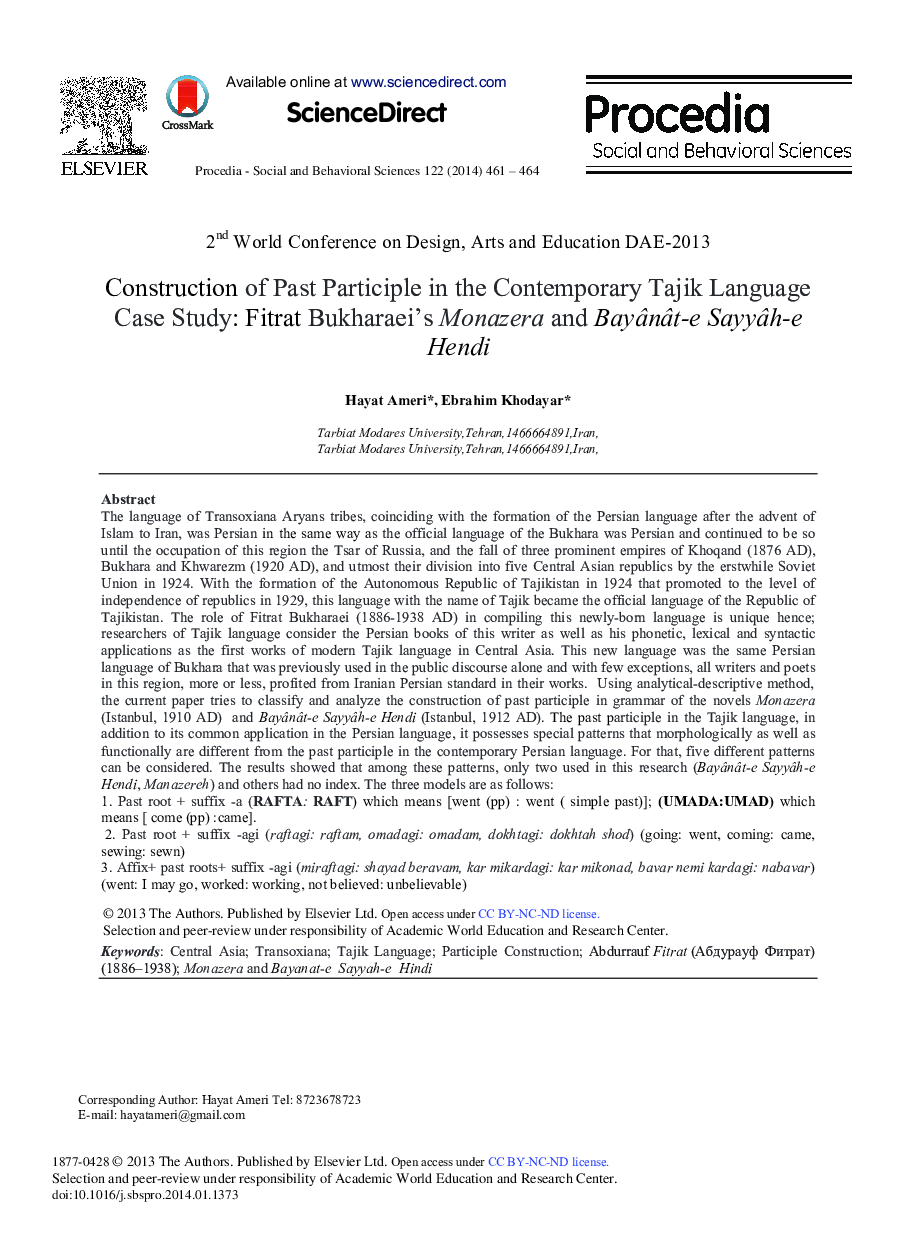| Article ID | Journal | Published Year | Pages | File Type |
|---|---|---|---|---|
| 1114930 | Procedia - Social and Behavioral Sciences | 2014 | 4 Pages |
The language of Transoxiana Aryans tribes, coinciding with the formation of the Persian language after the advent of Islam to Iran, was Persian in the same way as the official language of the Bukhara was Persian and continued to be so until the occupation of this region the Tsar of Russia, and the fall of three prominent empires of Khoqand (1876 AD), Bukhara and Khwarezm (1920 AD), and utmost their division into five Central Asian republics by the erstwhile Soviet Union in 1924. With the formation of the Autonomous Republic of Tajikistan in 1924 that promoted to the level of independence of republics in 1929, this language with the name of Tajik became the official language of the Republic of Tajikistan. The role of Fitrat Bukharaei (1886-1938 AD) in compiling this newly-born language is unique hence; researchers of Tajik language consider the Persian books of this writer as well as his phonetic, lexical and syntactic applications as the first works of modern Tajik language in Central Asia. This new language was the same Persian language of Bukhara that was previously used in the public discourse alone and with few exceptions, all writers and poets in this region, more or less, profited from Iranian Persian standard in their works. Using analytical-descriptive method, the current paper tries to classify and analyze the construction of past participle in grammar of the novels Monazera (Istanbul, 1910 AD) and Bayânât-e Sayyâh-e Hendi (Istanbul, 1912 AD). The past participle in the Tajik language, in addition to its common application in the Persian language, it possesses special patterns that morphologically as well as functionally are different from the past participle in the contemporary Persian language. For that, five different patterns can be considered. The results showed that among these patterns, only two used in this research (Bayânât-e Sayyâh-e Hendi, Manazereh) and others had no index. The three models are as follows:
